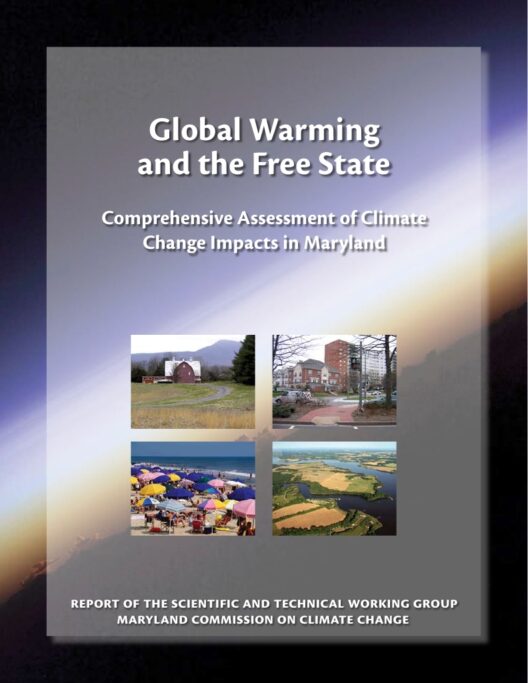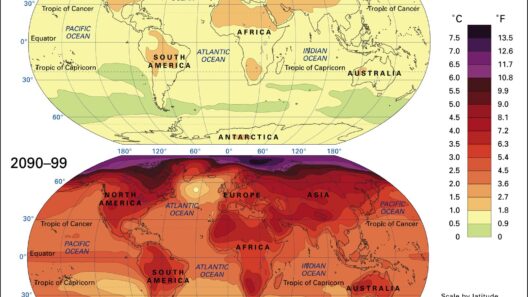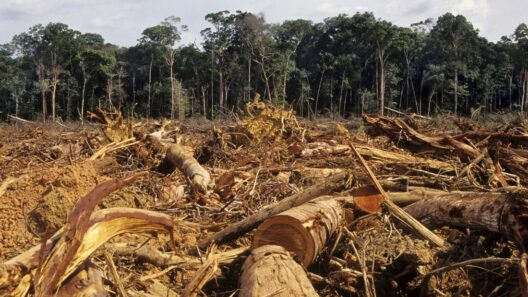Throughout the annals of history, humanity has witnessed the destructive wrath of natural disasters: earthquakes that shake the very foundation of cities, hurricanes that wreak havoc on coastal communities, and wildfires that engulf vast swathes of land. However, an insidious common thread has emerged in recent decades—global warming. This climate crisis has not merely shifted weather patterns; it has irrefutably escalated the ferocity, frequency, and unpredictability of natural disasters worldwide. A paradigm shift in our understanding of these phenomena is imperative if we are to confront the challenges head-on.
Global warming, primarily driven by greenhouse gas emissions from human activities, has led to an unprecedented rise in global temperatures. This increase is not merely anecdotal; it is supported by empirical data indicating that the average global temperature has risen by approximately 1.1 degrees Celsius since the pre-industrial era. This seemingly minute change has catalyzed a cascade of catastrophic events that are reverberating across the globe.
The most overt manifestation of climate change is the intensification of extreme weather events. Hurricane season, for instance, has morphed into a harrowing theater of destruction. Warmer ocean waters serve as fuel for these tempestuous storms, leading to hurricanes that are not only stronger but also linger longer before dissipating. The havoc wrought by Hurricane Harvey in 2017, which brought unprecedented rainfall and flooding to Texas, exemplifies this phenomenon. Studies have demonstrated that the storm’s rainfall was augmented due to rising temperatures.
Beyond tropical storms, wildfires have surged in frequency and severity, particularly in regions susceptible to arid climatic conditions. The Cycles of nature have been disrupted. Climatologists argue that as temperatures rise, the risk of wildfires becomes accentuated due to prolonged droughts and the earlier arrival of spring. California’s infamous wildfire season exemplifies this unsettling trend. The infernos that charred tens of thousands of acres in 2020 stand as a grim testament to the dire consequences of our changing climate.
Flooding is another environmental calamity exacerbated by global warming. Sea levels are rising as polar ice caps melt, and this phenomenon poses a looming threat to low-lying coastal areas. The increasing frequency of “sunny day flooding,” where high tides inundate streets even without significant rain, has become an alarming reality for urban planners. Cities like Miami and New Orleans are grappling with the grim implications of climate change, forcing them to engineer adaptive measures that were once considered unthinkable.
Moreover, the interconnection between ecosystems and the frequency of natural disasters cannot be overlooked. The degradation of forests—often referred to as the lungs of our planet—compounds the effects of climate change. Deforestation not only releases stored carbon into the atmosphere but also diminishes the earth’s capacity to absorb excess carbon dioxide. The dual assault on nature and climate has created a vicious feedback loop, as natural disasters further exacerbate environmental degradation.
The escalation of these disasters is often accompanied by a bewildering phenomenon: the societal and economic implications that unfold in their wake. The financial toll of natural disasters has reached staggering proportions, estimated at hundreds of billions of dollars annually. Communities are left grappling not only with the immediate destruction but also with long-term disruption and displacement. Vulnerable populations, particularly in developing nations, bear the brunt. Their limited resources and infrastructure—in combination with the exacerbating effects of climate change—create a perfect storm for disaster, leading to increased poverty and social instability.
In the face of these stark realities, the rhetoric surrounding climate change must evolve. The notion that individual actions are sufficient to combat this global crisis is limiting. Political inertia has hindered substantial policy changes, yet there exists an urgent need for comprehensive action on both a governmental and societal level. International cooperation is crucial. Global frameworks such as the Paris Agreement serve as necessary, albeit insufficient, steps toward mitigating the catastrophic trajectory we find ourselves on.
Education emerges as another vital component in shifting public perception and mobilizing collective action. Awareness initiatives can help demystify the scientific intricacies of climate change and natural disasters, fostering a sense of urgency and responsibility. Schools, community organizations, and media outlets possess the potential to serve as catalysts for change—encouraging critical thinking and action-oriented dialogue.
However, the narrative must extend beyond mere acknowledgment of the problem. A shift toward solutions-driven discourse—highlighting innovative approaches to sustainability and resilience—must gain prominence. Renewable energy technologies, sustainable agriculture practices, and infrastructure improvements offer tangible pathways for mitigating the impacts of climate change and bolstering community preparedness against natural disasters.
Ultimately, understanding the intricate link between global warming and the escalation of natural disasters compels us to reconsider our relationship with the environment. The cataclysmic events of today serve as a clarion call for a multifaceted approach to climate action that bridges scientific understanding, policy innovation, and public engagement. As the world continues to grapple with increasingly volatile weather phenomena, a collective commitment to preserving the planet for future generations is of paramount importance.
The time has come for humanity to shift its focus from reactive measures to proactive strategies that address the root causes of climate change. Moving forward requires an unwavering dedication to fostering a sustainable future—one wherein the threat of natural disasters is diminished by our collective actions and innovative solutions. The stakes have never been higher, and the call to action, ever more imperative.






